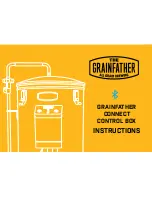
CMC Rescue, Inc.
|
A Z VORTEX User’s Manual
6
PRINCIPLES OF OPERATION
Stability is always a concern when using tripods, A-frames, and Gin Poles. Unless the forces
are carefully evaluated, the possibility of legs slipping or the structure toppling is very real. The
following
Principles of Operation
apply to using the AZ VORTEX as well as other tripods, Gin
Poles and A-frames.
•
Whenever possible, set up the AZ VORTEX in the three-legged configuration. It usually
takes less effort to transport the complete set of legs than to securely rig the AZ VORTEX in
the A-frame or Gin Pole configuration. An A-frame and a Gin Pole provide options where the
full tripod configuration cannot be adapted to the location.
•
The resultant force on any tripod should be directly down, as close to the center of the three
legs as possible.
•
When extending the easel leg of the AZ VORTEX, the resultant force vector may move
toward the A-frame legs and a tag line will be necessary to stabilize the AZ VORTEX.
Connect the tag line to the head and secure it to an anchor behind the AZ VORTEX.
•
The resultant force on an A-frame should be in line with the legs. A line projected through
the pin and pulley axle should be aligned with the legs. The angles between the Working
Line and the legs on either side should be equal.
•
Do not exceed the safe working load. As an artificial high directional, the AZ VORTEX uses
a change of direction pulley at the head. Depending on the entry and exit angle of the
Working Line, the force on the legs can be multiplied to twice the weight of the load.
•
Prevent any possible movement of the legs by connecting the feet together using Hobble
Straps, cord, webbing or chain, or by anchoring each individual foot to the surface.
•
Consider using the easel leg to the side when setting up a sideways A-frame. If the Working
Line is kept inside the legs, stability is increased. The easel leg should still be guyed back.
•
8- or 9-mm Accessory Cord works well for guy lines in most circumstances. Use the
triangular holes in the head for attaching guy lines.
•
Always run the Safety Line (Belay Line) at ground level. This minimizes the possible fall
distance if the AHD topples or collapses.
•
Always provide travel restraint for personnel working near the edge.





































